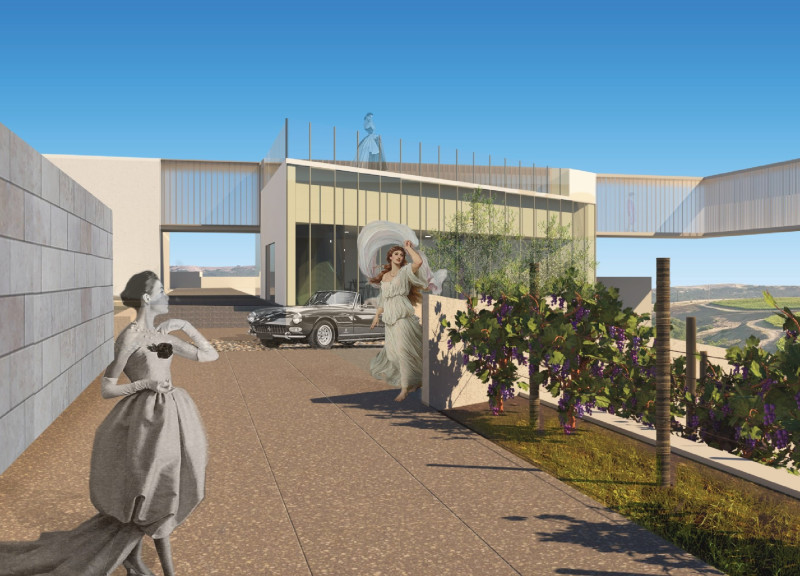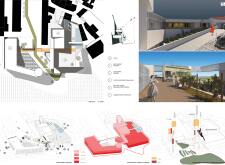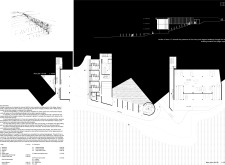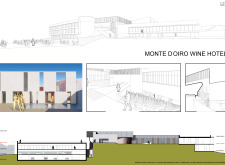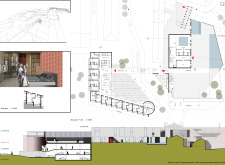5 key facts about this project
The hotel functions as a multifunctional space that accommodates overnight guests, dining, events, and recreational activities. It features a well-planned layout that promotes ease of movement between the hotel, restaurant, and event spaces. The combination of these elements creates a cohesive visitor experience focused on the appreciation of wine and the surrounding agricultural landscape.
Materiality and Structural Elements
The architectural design emphasizes the use of local materials to create a sense of place. Concrete provides structural support, while expansive glass façades facilitate natural light penetration, contributing to energy efficiency. Stone is used for landscaping and feature walls, establishing a tactile connection with the terrain. Wood finishes enhance the interior warmth, contrasting with the exterior's modern façade, which utilizes steel as a primary structural frame. Each material is selected to contribute to the overall aesthetic while supporting sustainability.
Unique Design Approaches
What differentiates the Monte D’Oiro Wine Hotel from similar projects is its strong emphasis on community integration and the celebration of local culture. The design promotes active engagement with the vineyard through outdoor spaces that invite interaction, such as gardens and seating areas. The project also incorporates sustainable building practices, including energy-efficient installations and passive design strategies, which serve to minimize the environmental impact.
The architectural layout allows for versatile use of space, enabling the hotel to host various events ranging from wine tastings to community gatherings. This adaptability is accomplished through the thoughtful arrangement of functionally distinct areas that are designed to flow seamlessly into one another.
Community and Visitor Engagement
The project focuses on enhancing community engagement by involving local residents in its offerings. The restaurant features menus that highlight local ingredients, reinforcing the farm-to-table philosophy integral to the experience. Furthermore, the design accommodates both tourists and locals, making the facility a hub for events, tastings, and cultural activities.
The Monte D’Oiro Wine Hotel represents a significant development within its region, marrying hospitality with viticulture while promoting sustainable practices. The architectural decisions made in this project underscore its commitment to both environmental stewardship and community integration. To explore the architectural plans, sections, and comprehensive designs of this unique project further, interested readers are encouraged to delve deeper into its presentation.


